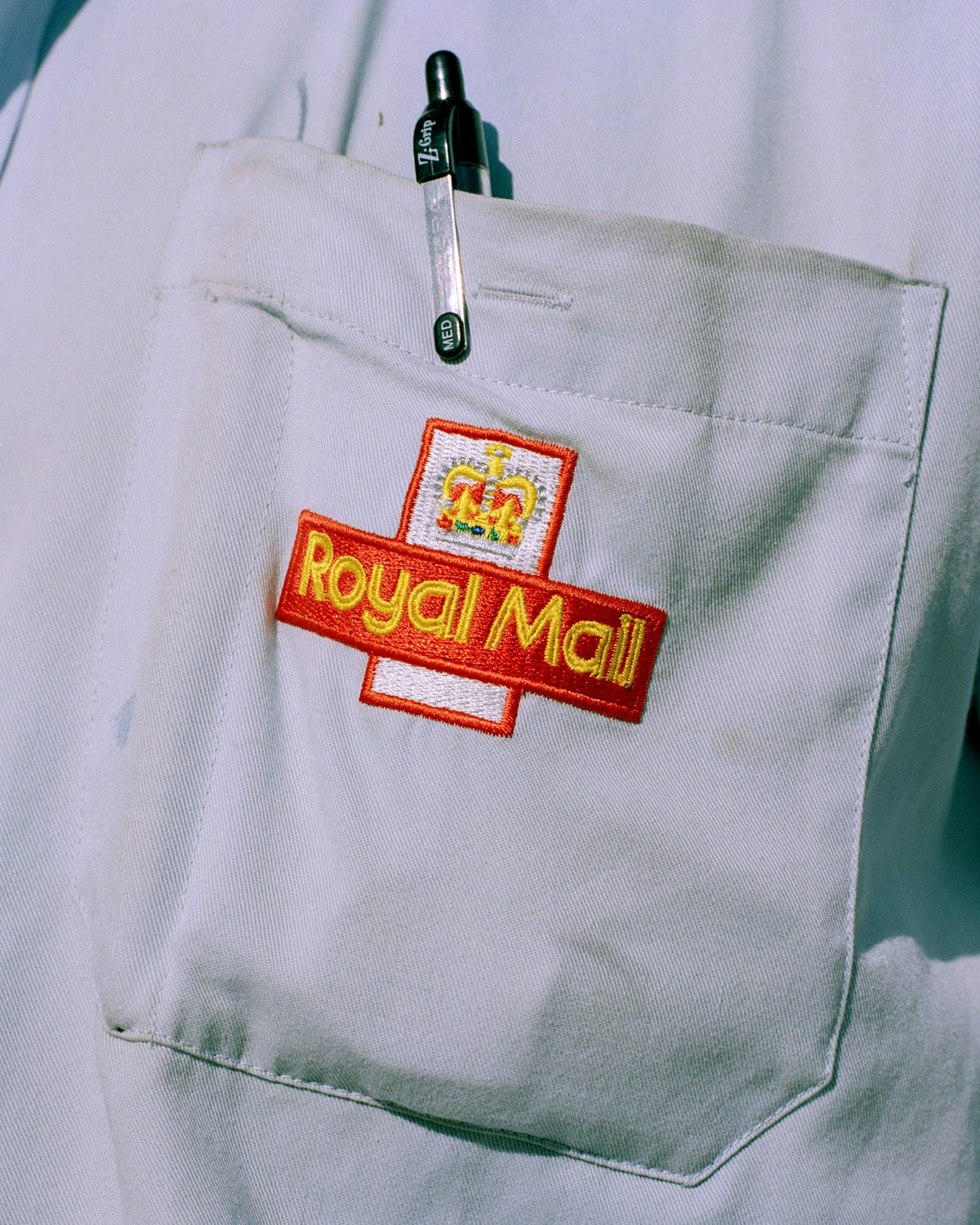Photographer Cassian Gray honours the humble postal worker
Through his series, The Posties, Gray has been able to connect with others during a time when the world feels ever more closed off and insular
When London was placed into tier three restrictions after the first national lockdown, photographer and Kingston University student Cassian Gray decided to shine a light on unrepresented key workers in society. “There had been an extensive amount of coverage for NHS workers … and that’s when I thought of the Royal Mail postal workers,” explains Gray. “Their iconography really struck me; their bold red uniform with the recognisable Royal Mail logo emblazoned on the chest pockets of their shirts and fleeces. Ironically, they are relatively invisible workers and often pass unnoticed.”
Gray was drawn to the commonplace notion of these workers and felt the fact we all have one would resonate with the viewer. “Funnily enough, as the project developed, I began to notice posties everywhere! They have such a presence that is so recognisable once consciously looking and I hope that this project can formulate this recognition from others.”

Due to the restrictions in place, Gray was keen to keep the project local and luckily for him he found a Royal Mail sorting depot around the corner from his university house. “I set out one morning with the idea of making portraits of the posties I met on the street and then spending some time at the depot,” he says. “Initially, I was worried that the postal workers would be busy on their shifts, not wanting to be pestered by a young photography student, yet, although many I met were busy and rushing to get their deliveries sent off, all were kind, interested and helpful.”
From spending time at the depot, Gray was also able to catch the workers towards the end of their shifts, allowing for a more relaxed environment and more time to create the portraits. “Shooting on a big Mamiya RZ67 medium format film camera also provided a great talking point and an immediate curiosity,” he says. “I found that the more time I spent by the depot, the more approachable I was, as the posties became used to my presence and the same faces would often appear asking how the project was going.”


Gray says the first lot of portraits were an obvious reference to their profession, as their red uniforms and equally red vans, plus the Royal Mail logo, took centre stage and almost overwhelmed the image. “As the project developed, I began to focus more on the individuals, removing them from the obviousness of their profession to spotlight them as humans,” explains Gray. “The resulting portraits are much more subtle and feel somewhat intimate. The project is predominantly about the individuals behind the logo, the hands behind the letters and parcels, so by removing the logo, a focus is placed on the workers as humans, regardless of their profession.”
To ensure their work wasn’t completely erased though, Gray made sure to include detailed shots of the posties as well as wider shots of them walking down the street to provide context for the viewer. “This creates the duality within the series of the individual and the detail; pulling the viewer into the frame and then allowing them to breathe.”


Gray’s photographs are drenched in golden light, which adds to the warmth of the Royal Mail red and clear blue skies. His work is a blending of documentary photography with a fine art approach to portraiture, which he says stems from his mother being a portrait painter.
“I’ve grown up surrounded by oil paints and the smell of white spirit, canvases dotted around and art books covering the shelves. Many of the photographs I’ve made over the years are reminiscent of her painterly style, so I would say that subconsciously she is definitely one of my biggest sources of inspiration,” Gray says. “I hope that this series clearly depicts the honest engagement between the subjects and myself: a comfortable, wholesome environment portrayed through an intimate approach to documentary photography.”


The photographer’s practice revolves around the connection between himself, his camera and other people. Often it provides Gray with the opportunity to stop and speak to people and share a moment, which felt all the more powerful during the pandemic. “What I most enjoyed about this project is that it enabled me to get out there and make connections, speak to strangers, hear their stories and create portraits of the individuals as a homage to their service,” says Gray.
“Along with this, one of the posties, Claudia, depicted in the close-up portrait with the cap, became a great friend and helped me to round up many of the posties who were inside the depot to come and have their portrait taken. She was fascinated by the Mamiya RZ67 and we spoke often about film cameras. I recommended a 35mm SLR which she bought and is now making beautiful photographs herself.”


From speaking to the postal workers Gray learned how essential their work really is, in sorting, arranging and delivering letters and parcels, and that it’s a role that’s existed for over 500 years.
“They facilitate connection, delivering emotion, heartbreak and joy, sentimental value and are the tactile linking mechanism between humans all over the country,” Gray says. “The posties are crucial in maintaining the ease of living we have all become so used to and I hope this project can in some way provide a spotlight for that much needed appreciation.”



















